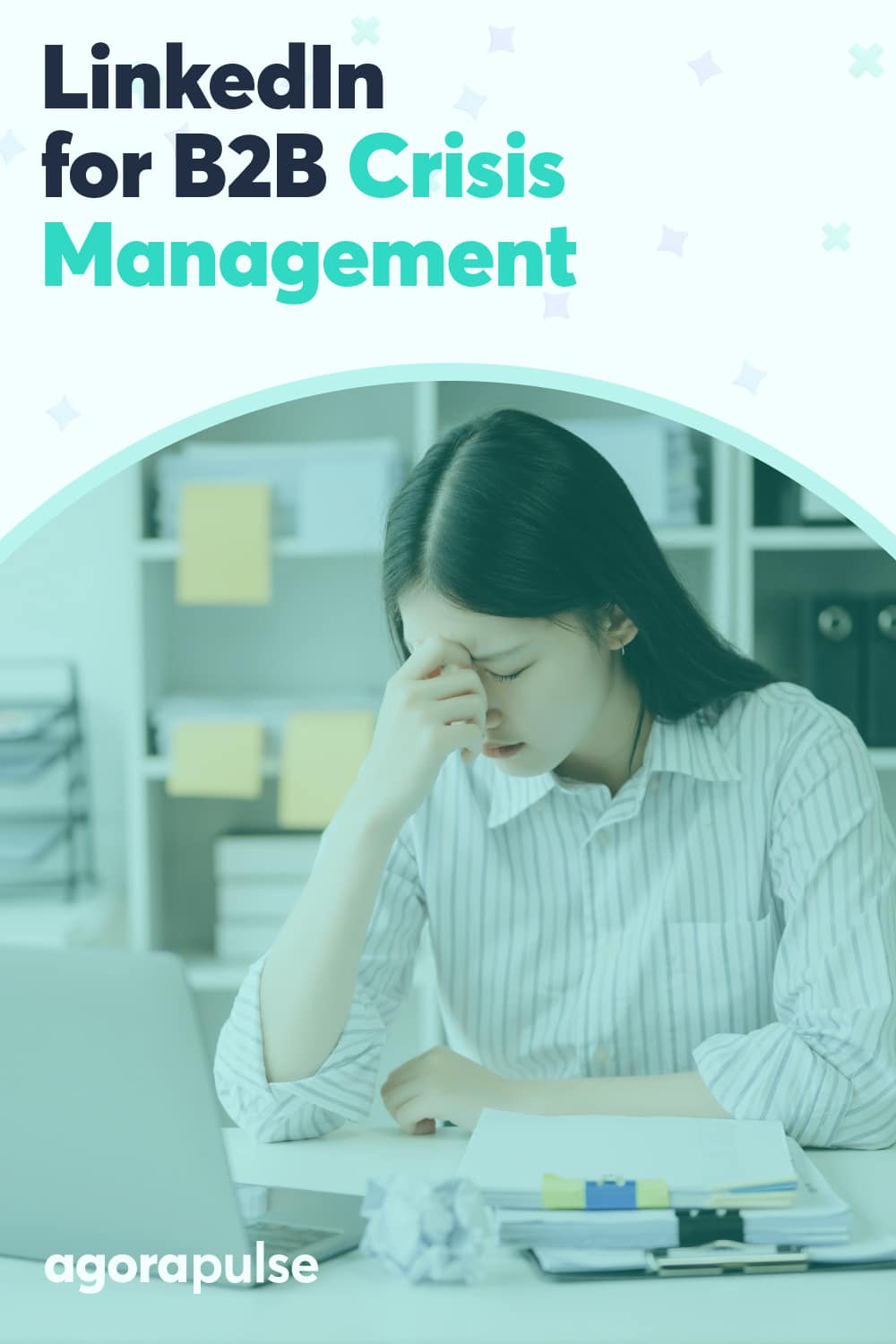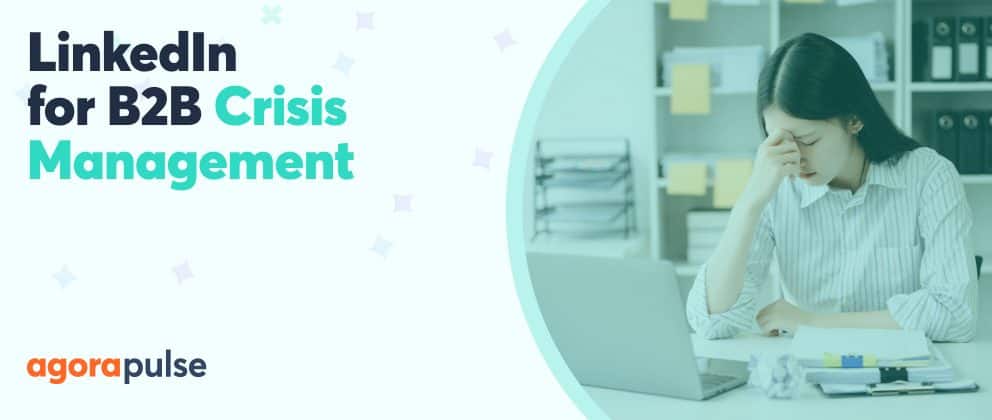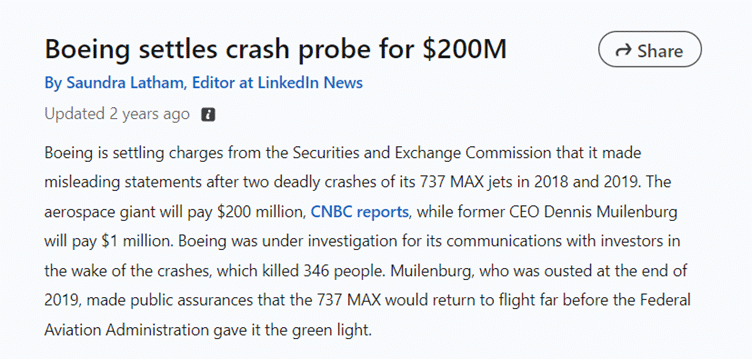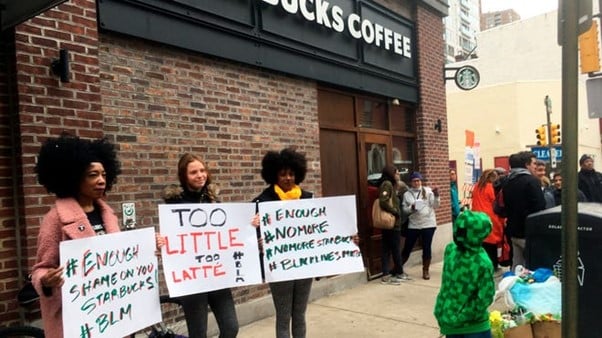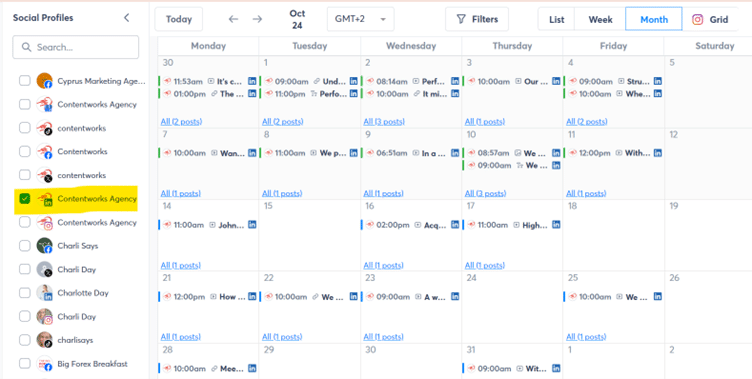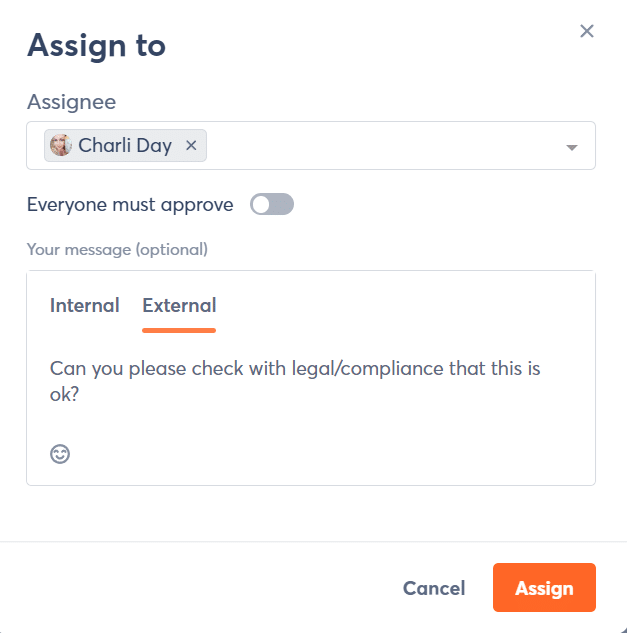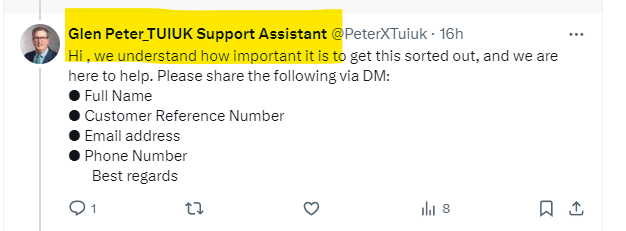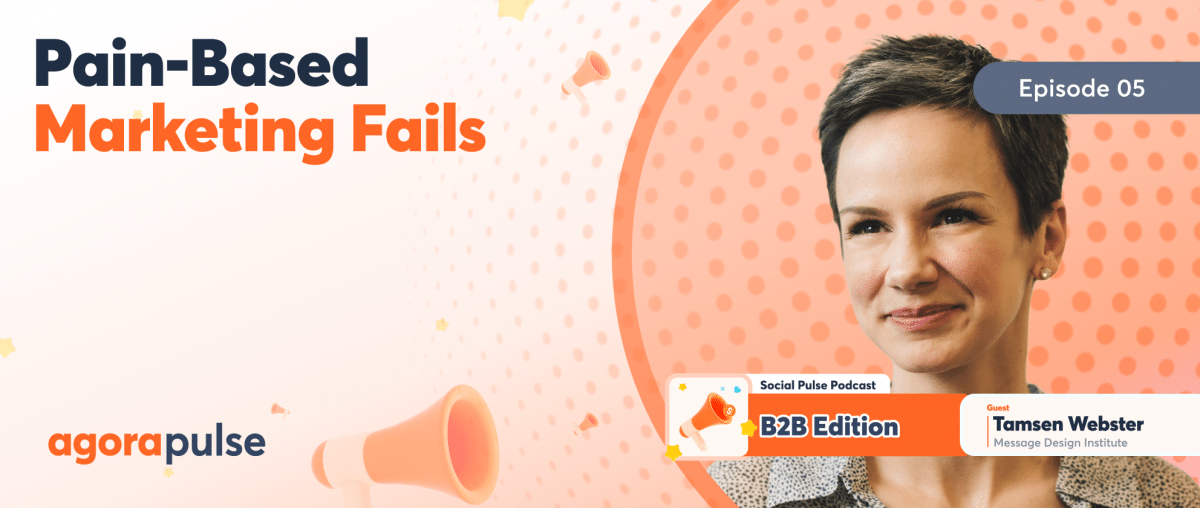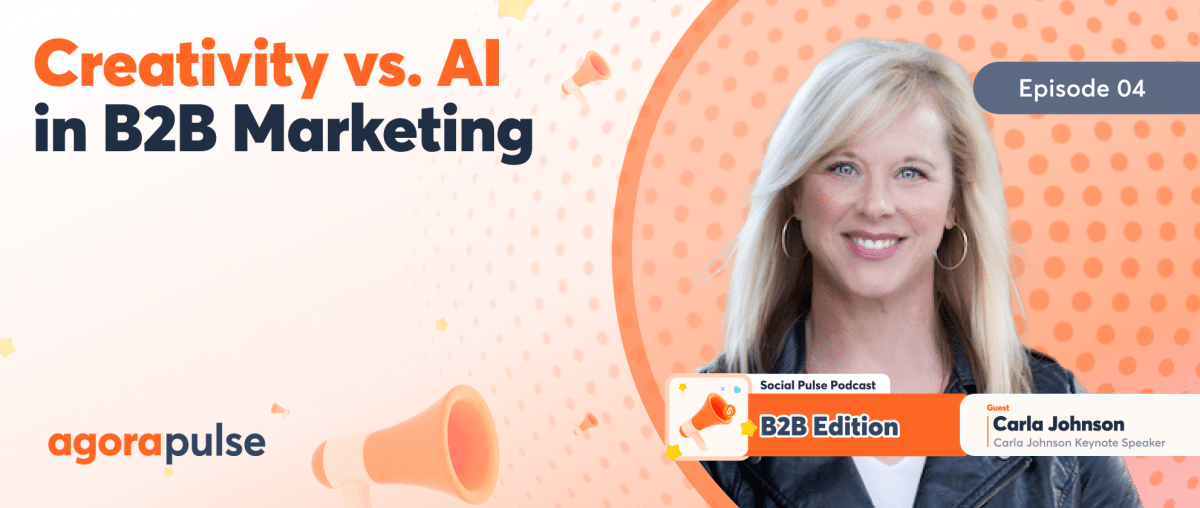LinkedIn offers organizations a valuable communication platform for B2Bs and stakeholder outreach during times of crisis. But with an audience that expects professional communication, the pressure is on to be strategic with crisis communication on the social media platform.
Here’s how B2B marketers can use LinkedIn for crisis management and industry challenges.
Sign up for a free trial and start managing your social now.
Why LinkedIn Is the Go-To Platform During a B2B Crisis
LinkedIn launched in 2003 and is now the largest professional social network. Microsoft acquired LinkedIn in 2016, declaring that their mission is to “Connect the world’s professionals to make them more productive and successful.”
Here are some of the reasons LinkedIn is the go-to B2B brand.
- LinkedIn has over 830 million members worldwide. LinkedIn reports that 2 new members join every second.
- 97% of Fortune 500 CEOs are on LinkedIn. If you want to reach decision makers, there is no better social media network.
- LinkedIn has members in 200+ countries and is available in 26 languages. For brands wanting solid global coverage, it ticks all the boxes.
- In regard to advertising, LinkedIn is often seen as pricey. But 58% of marketers say LinkedIn provides the best ROI and the highest LTV (lifetime value).
- LinkedIn allows you to filter your search criteria based on industry, location, job title, and other factors. This helps B2B marketers target their ideal audience, increasing the chances of generating leads and closing deals.
What Does a B2B Crisis Look Like?
A B2B crisis can be any event that disrupts business operations or harms trust and relationships. While B2C crises can’t be overlooked, B2B crises often involve contractual relationships and larger financial stakes. Moreover, B2B crises can have deeply negative effects on entire supply chains or industries.
Here are some of the categories a B2B crisis might fall into:
- Supply chain disruptions. Failure to deliver goods or services on time can severely impact an entire chain of suppliers and stakeholders.
- Data breaches and cybersecurity threats. A breach involving sensitive information such as customer contracts or financial data can damage trust between B2B and B2C partners.
- Financial mismanagement or insolvency. A company facing financial difficulties or bankruptcy can lose trust from suppliers, investors, partners, and clients.
- Regulatory or legal issues. Violating regulations or being embroiled in public legal disputes can damage a company’s reputation and disrupt B2B trust.
- Hiring and firing gone wrong. Layoffs, cultural clashes, or unexpected operational changes can damage B2B relationships. Loss of a popular director or thought leader can also dent a brand’s reputation. Firing events often go viral on platforms like TikTok.
- Executive misconduct. Scandals like fraud, unethical behavior, or criminal activity involving top executives can taint a company’s image and negatively impact its ability to maintain B2B relationships.
Linked In for B2 Crisis Communication and Management
So, with a vast array of available networks, what makes LinkedIn the ideal place for crisis management? And how do you use it (and how should you not use it)? Let’s look at some real-world examples.
B2B Crisis #1: Addressing key stakeholders directly
Fortune 500 CEOs, decision makers, stakeholders and founders are all under one digital roof at LinkedIn. Brands there have the opportunity to address key stakeholders in a professional setting. Communicating transparently with this audience can really convey trust and credibility during a crisis.
Real-world example of B2B crisis communication
Brands can use LinkedIn to:
- Issue formal statements
- Offer apologies
- Provide credible updates
After two fatal crashes involving the Boeing 737 Max in 2018 and 2019, Boeing faced intense public scrutiny over the safety of its aircraft. Boeing’s then-CEO, Dennis Muilenburg, used LinkedIn to post messages expressing condolences, and to acknowledge the company’s responsibility. Importantly, he also addressed the steps Boeing was taking to restore trust and prevent future accidents.
But this is a cautionary tale. Statements and promises were made without proper authorisation, further deepening Boeing’s troubles. During a crisis, especially one as serious as this, it’s essential to get your facts straight before you address your audience.
And there’s another important point to note here. If you haven’t addressed core issues, then damage control will be futile.
A report by Morning Consult showed net trust in Boeing dropped 12 percentage points among U.S. adults from December 2023 to January 2024. The drop in trust came after a door plug blew off a Boeing 737 Max 9 on January 5, 2024.
B2B Crisis #2: Gaining control of the narrative
Gaining control of the narrative is key in crisis management. Failure to gain control can mean misinformation or speculation runs rampant, leaving brands scrambling to correct the narrative. This is especially true in the AI-driven, deep fake world in which we find ourselves!
LinkedIn allows companies to control their own narratives through company pages, official posts, and articles. And another plus is that with long-form content permitted on the platform, detailed explanations and action plans can be shared easily. These carry more weight and credibility than a Facebook post or Instagram Story. Plus, the LinkedIn audience is a lot less prone to trolling than on other platforms. Probably because their profiles are linked to their jobs.
Real-world example of B2B crisis communication
In 2018, Starbucks was embroiled in a racial bias controversy. It happened after two African American men were arrested at one of their Philadelphia stores while waiting for a business meeting. The incident was filmed on several mobile phones and immediately went viral. It garnered widespread public outrage plus rumors about the company’s stance on racial issues.
Starbucks’ then-CEO Kevin Johnson used LinkedIn to issue a public apology and clarify Starbucks’ values around inclusion and diversity. He also announced the company’s plan to close stores for a day to provide racial bias training to employees. This was key in helping to quash rumors that Starbucks wasn’t taking the issue seriously. The LinkedIn statement was also posted on their company news . LinkedIn’s professional tone and reach helped Starbucks to mitigate false speculation. It added solemnity to the issue and acted as official communication from the brand.
B2B Crisis Example #3: Reinforcing Credibility
A PR crisis can cause a brand to lose credibility fast. Brands we once deemed as untouchable, professional and esteemed can be reduced to a joke in a matter of minutes. LinkedIn is a good place to regain control and reinforce your brand’s credibility. This involves delving into what happened, why it happened and why it won’t happen again. Additionally, reiterating the success of your brand, its untarnished history and strength of the organisation. When done correctly, this can mean that any jokes around your brand are short lived and don’t cause permanent damage.
Real-world example of B2B crisis communication
This example is a lot less serious in the grand scheme of things than the Boeing one above. Nevertheless, when PwC made a mix-up at the 2017 Academy Awards, it was still a blunder. “La La Land” was mistakenly announced as Best Picture instead of “Moonlight” due to an error by PwC staff. PwC issued a formal apology on LinkedIn, apologized to the Academy, the filmmakers, and viewers, while also emphasizing PwC’s long history with the Oscars and its commitment to future improvements.
By using LinkedIn, PwC directly addressed its global professional audience in various industries reassuring them of professionalism.
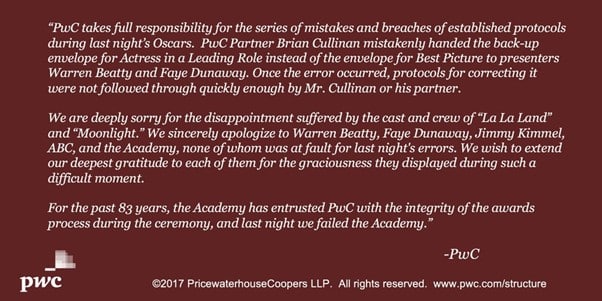
Example of a B2B crisis being handled
A combination of humility, honesty and reassurance probably saved the day in this instance.
Takeaways From These B2B Crises Examples
- Direct access to key audiences. The professional network on LinkedIn means that brand statements reach the right people. Stakeholders, investors, clients, employees, and business partners can also address their concerns or raise questions.
- A professional fit. The tone of LinkedIn fits much better for serious discussions, statements and apologies. This makes it more sincere and trusted than other platforms. Of course, it’s essential that crisis management content is written professionally and passed through the right legal and compliance channels prior to posting.
- Controlling the message. By posting on their own LinkedIn pages, brands are showing that the message is official. There are a lot less bots on LinkedIn and the platform actively protects brand integrity.
- Thought leadership. It’s not all accepting awards and sharing business insights. Sometimes thought leadership means stepping up to the table, acknowledging mistakes and setting out new ways to work.
- Two-way engagement. LinkedIn allows for meaningful, direct engagement and debate. Brands can interact directly with their audience and monitor conversations to gage public sentiment. This open communication can help alleviate negative sentiment and reassure stakeholders that the brand is listening.
Agorapulse And LinkedIn, A Winning Crisis-Management Duo
At my agency, Contentworks Agency, we use Agorapulse to manage our LinkedIn content. Because who doesn’t want to save time, streamline all their content and manage replies and reports in the same place. Plus, we’re talking about crisis management and Agorapulse has a mobile app, so you can handle responses on the go.
Here’s how Agorapulse can help you manage LinkedIn:
- Scheduling and publish content for numerous brands all in one place. In the crisis communication arena, Agorapulse allows you to issue swift updates or even schedule them to go out alongside other communications.
- Collaborative tools like assign make it easy to get approvals on your posts before they go live. Working in highly regulated sectors like finance, make this a tool I use a lot. You don’t want to skip compliance and legal approval when posting around a PR crisis.
- With Agorapulse, you can manage comments in real time. During a crisis, you need to be timely and watch out for fake bots trying to intercept users on your threads. This is something I’ve noticed a lot recently. This reply from a fake TUI account was one of 5 replying to my actual booking discussion with the real TUI Airlines.
- Using the Agorapulse dashboard, you can track and analyze post performance and gauge brand sentiment. This is important not only during a crisis, but in the months afterwards. And it’s always important to monitor brand sentiment.
Establish a LinkedIn Crisis Playbook
Your LinkedIn crisis playbook should include your brand behaviors before, during, and after a crisis. This will set out clear guidelines for your employees and media agencies to ensure communication is aligned.
6 essentials to include in your B2B crisis playbook
- Build a trusted presence on LinkedIn BEFORE there is a crisis. This ensures people will listen and trust you should the worst happen. You can do this by posting consistently, utilizing company advocacy and being transparent. Regular updates on industry trends, leadership insights, and case studies will really help with this.
- Use social listening tools to follow and document brand sentiment during a crisis. See what people are saying and gather common misconceptions or rumours so that you can create a relevant statement at an appropriate time. Remember to check out Agorapulse’s social listening suite!
- Know your decision-makers. Who will approve your digital communications during a crisis? You need to know who to contact and how to reach them. Remember the crisis won’t always hit during business hours so you need all the contact information well documented. You also need to know who will do what during a crisis. Eliminate panic and confusion by deciding ahead of time.
- Review your scheduled content. A crisis doesn’t necessarily mean you will pause or delete scheduled content. But it might. In the event of a serious incident, it might be entirely inappropriate for your scheduled posts to go live. With Agorapulse you can change the date on scheduled posts or delete them altogether.
- Plan your recovery content. Publish blogs, or posts discussing lessons learned and recovery strategies. Feature your leaders’ discussing changes implemented to prevent future crises. Share good news stories and positive customer reviews too, although it’s important to be gentle with this tactic. “Greenwashing” your feed with good news stories straight after a crisis might go against your brand.
- Rebuild audience trust. Hosting and participating in webinars is a good way to show your transparency. You can also run polls, ask questions in LinkedIn Groups and promote your participation in virtual conferences and roundtables. Remember to monitor responses and where possible respond in real time.
In Conclusion
LinkedIn is an excellent platform for B2B crisis communication and management and Agorapulse is the ideal tool to facilitate swift interactions. Agorapulse also allows you to quickly spot an incoming crisis, manage it, respond to it and report on it, all in one dashboard.
